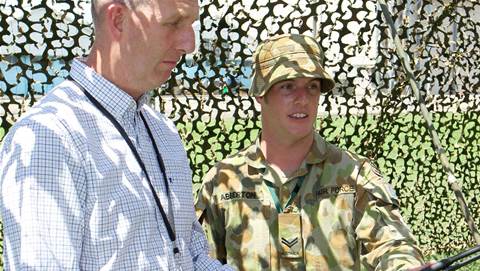
The architecture features the iWay Service Manager and adaptors that operate between Tumbleweed Secure Transport servers and backend applications such as databases and ERP software.
Using what Information Builders’ regional director Paul Beks describes as a “lightweight approach in a non-threatening way”, the architecture aims to provide integration to enterprises’ backend environment without the need for additional development work.
The architecture targets what Beks views as a mature market that includes “anybody with a data centre”.
“The uglier you look, the better we look,” he said, explaining how the iWay architecture could simplify and manage communications between multiple applications and servers.
“From a security perspective, this is an issue most organisations have to face: how to secure data moving in and out of an organisation,” he said.
“There’s recently been more awareness about this, so we’re doing workshops around it also.”
Profiled at one such workshop in Sydney last week was beauty company Coty, which used the iWay software integration technology to connect SAP R/3, Oracle 11i and Genecod to J.D. Edwards.
The implementation was completed in six months, at what the company expects to be a quarter of the cost of traditional methods of code-cutting. Coty boasts to have attained a return on investment (ROI) of 400 percent.
“IT organisations in Australia are inherently understaffed. This is one method of helping that scenario by centralising file transfers,” Beks said.
Depending on the number of adaptors required in a particular business’s architecture, the iWay technology costs from tens of thousands to millions of dollars, Beks said.
The technology is currently distributed by Information Builders, Information Gateways, as well as their partners SAP and IBM.









.png&w=100&c=1&s=0)

 Digital Leadership Day Federal
Digital Leadership Day Federal
 Government Cyber Security Showcase Federal
Government Cyber Security Showcase Federal
 Government Innovation Showcase Federal
Government Innovation Showcase Federal
 Digital NSW 2025 Showcase
Digital NSW 2025 Showcase











_(1).jpg&h=140&w=231&c=1&s=0)



